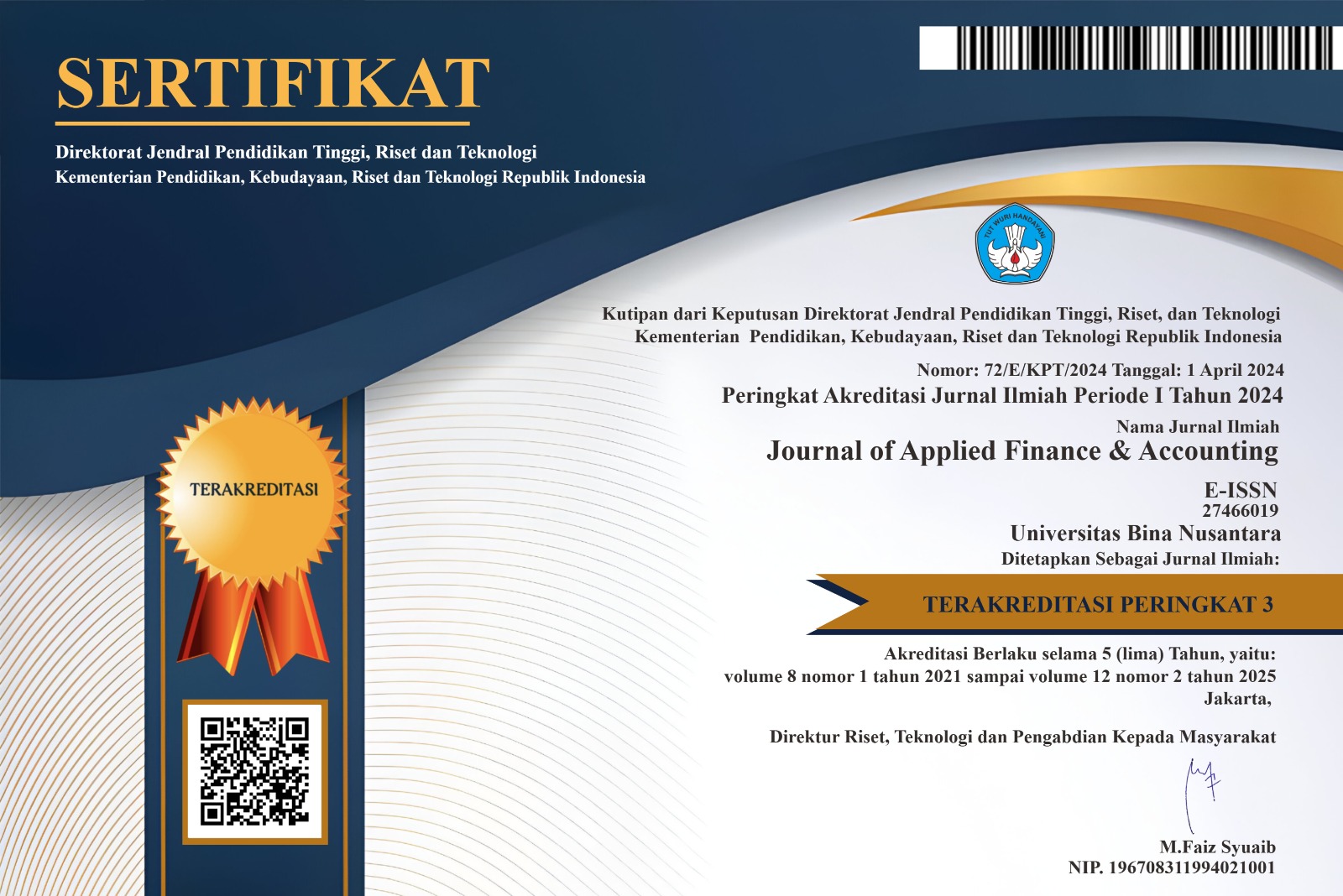A STUDY TO TEST STOCK RETURN BASED ON PE STRATEGY AND THE COMBINATION BETWEEN PE AND 200 DMA STRATEGY IN COMPARISON TO THE RETURN GENERATED BY BUY AND HOLD STRATEGY
DOI:
https://doi.org/10.21512/jafa.v3i1.160Keywords:
Price to Earnings Ratio (PE), 200 Daily Moving Average (DMA), Stock prices.Abstract
The main purpose of this study is to test a market perception that a low Price to Earnings ratio (PE) relatives to 5-year historical average and the combination with 200 Daily Moving Average (DMA), are a good indicator to generate buy & sell signal that can beat buy & hold strategy. The research uses 28 samples taken from 45 companies in the Kompas 100 index. The first study will use low PE, when company’s PE is below its 5-years average PE, the buy signal will be generated. The second study will use combination of low PE and 200 DMA, if PE of company below its 5-years average and its stock price is above 200 DMA, the buy signal will be generated. The T-test analysis will be conducted whether the different return between PE and PEDMA with buy and hold strategy is significant or not. The results shows that the low PE strategy and the combination of PE and DMA can give positive returns to the investor although it cannot beat the return by using buy & hold strategy. The investor cannot only use low PE as a single indicator in buying or selling stock, there should be another parameters.
Downloads
Published
Issue
Section
License
Authors who publish with this journal agree to the following terms:
Authors retain copyright and grant the journal right of first publication with the work simultaneously licensed under a Creative Commons Attribution License that allows others to share the work with an acknowledgement of the work's authorship and initial publication in this journal.
Authors are able to enter into separate, additional contractual arrangements for the non-exclusive distribution of the journal's published version of the work (e.g., post it to an institutional repository or publish it in a book), with an acknowledgement of its initial publication in this journal.
Authors are permitted and encouraged to post their work online (e.g., in institutional repositories or on their website) prior to and during the submission process, as it can lead to productive exchanges, as well as earlier and greater citation of published work (See The Effect of Open Access).




